The tight calves perfect storm: heavy compound movements, sitting all day, and wearing shoes with elevated heels.
If you’re a desk worker, or even someone who spends a good chunk of their day sitting, then chances are you understand the issue of tight calves. To top it off, if you regularly wear dress shoes and high heels, aka Achilles shortening gear, then you’re even more susceptible to encountering this problem.

Having suffered from tight calves for the majority of the last four years, I decided to take a stand, put my foot down, and start working on my ankle flexion (literally). Throughout the day, I’ve been making a conscious effort to stretch my lower posterior leg to help improve my lifts, and to stop subconsciously relying on my lifter’s elevated heel to hit ample depth.
The Lower Leg Posterior
The calves are made up of a couple major muscles, and for this article we’ll cover the major two which include: The gastrocnemius (superficial muscle) and the soleus (deeper muscle). These muscles work together to concentrically create ankle plantar flexion and provide stability with leg movements in our every day lives. Typically, when someone experiences tightness in these two muscles, then they’ll also have a tight Achilles/Calcaneal tendon as well (the tendon that runs from your heel to the gastrocnemius).
Below is a picture that provides a quick overview of the superficial muscles/tendon we’ll be covering (on the left), along with an image covering the deeper posterior leg muscles.
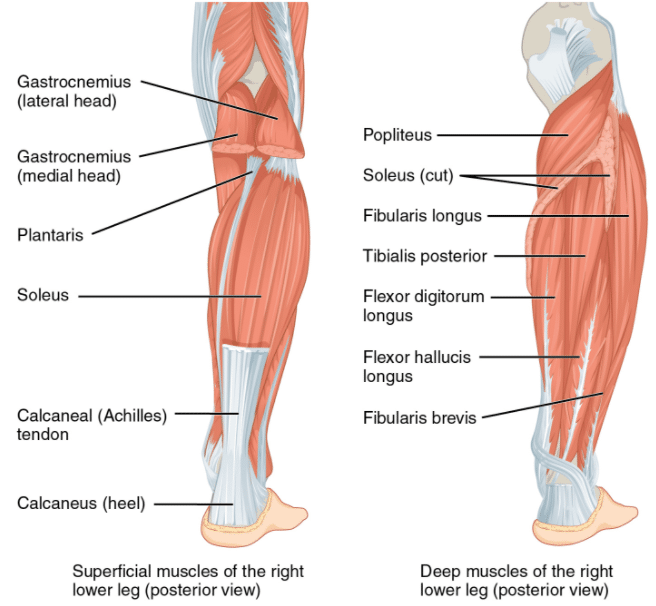
Photo by CFCF. Licensed under CC BY-SA 4.0
The Calf Stretches
The seven stretches below can be useful for a variety of athletes, and some will benefit more than others. For example, you may find that your soleus is tighter than your gastrocnemius, so some of the soleus oriented stretches will fair best. This list is meant to provide you with extra tools to add into your daily regimen, not be an exclusive list.
The Sets, Reps, and Time Frames
These movements can be done as often as you’d like, and for as long as you feel fit for your goals. Personally, I’ve changed the amount of time I’ve spent working on calve mobility throughout the day periodically, and what I’ve been currently doing tends to fair best.
My advice if you don’t know where to start: Try the rep, set, and time frames below, then manipulate them dependent on your needs (longer for tighter calves, shorter for those with better ankle mobility).
- Sets: 3-4 rotations per each exercise
- Reps (Static Stretch): 3-4 deep breath cycles before releasing
- Reps (Dynamic Movement): 20 reps per each leg
- Time Frames: Ditch the stopwatch and use deep breaths to dictate time
1. Down Dog Pedal & Static Hold
I like to use this movement to begin with because the pedal makes it a little more active than a static stretch, while simultaneously allowing you to easily transition to the static version of the movement. This stretch will help elongate the gastrocnemius, and if you’re aiming for the soleus + hamstrings, then a slight knee bend can help facilitate that goal.
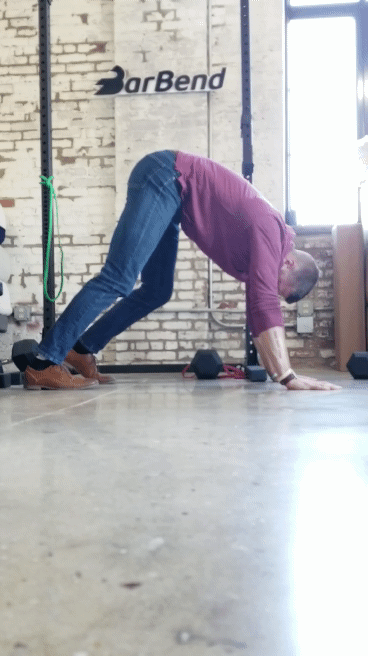
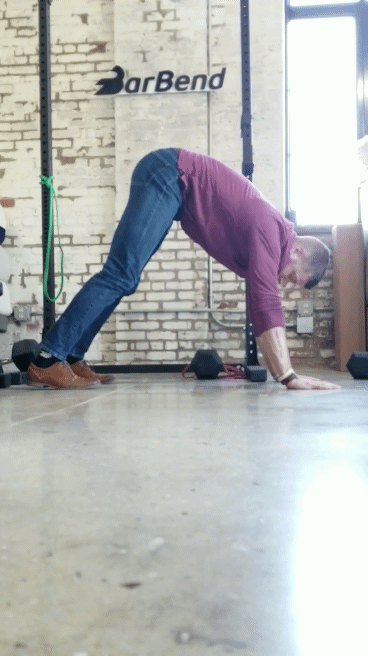
2. Runner’s Stretch Gastrocnemius & Soleus
The next movement is a little more static, and can target both the gastrocnemius and the soleus. If your goal is stretching the gastrocnemius, then leave the leg straight(er), and for the soleus create a slight bend in the knee. A slightly bent knee will allow your ankle to go deeper into flexion. You can use a wall, or any surface for the bracing of the arms.
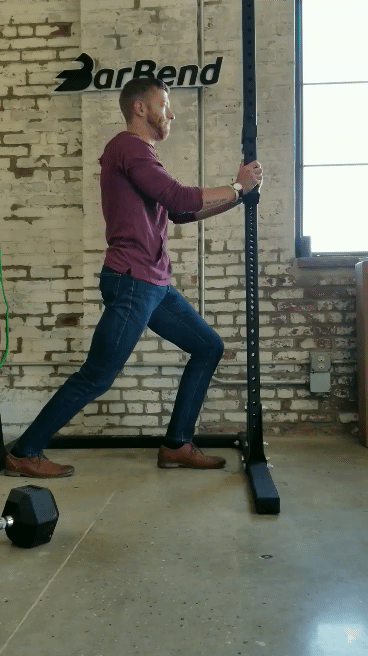
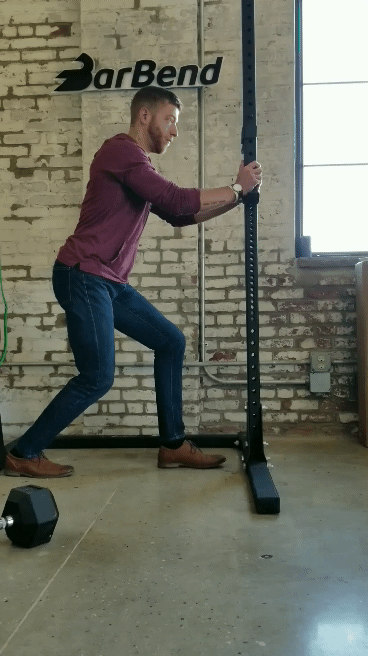
3. Wall Stretch Gastrocnemius & Soleus
The next stretch can be performed on a wall, or any elevated surface (I used a dumbbell). Similar to the stretches above, a straighter leg will target the gastrocnemius, while a bent knee will target more of the soleus. With this movement, place the ball of your foot on the surface, then ease into the stretch slowly.
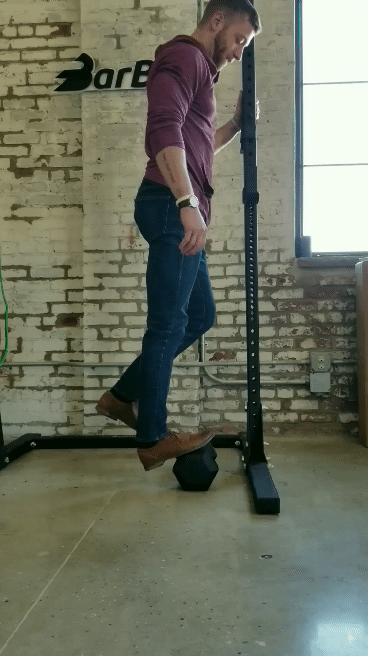
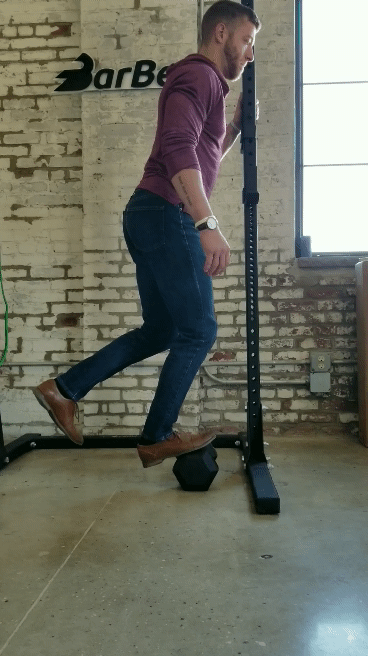
4. Seated Band Stretch & Bodyweight Squat Lean
The last two movements are optional, and I like to include them interchangeably depending on how I’m feeling. For example, I’ll use the seated cable stretch when my legs are a little more sore, then use the squatted lean when I’m fresh and have a leg day later in the day. How you use them is up to you, and progress into each at your own speed.
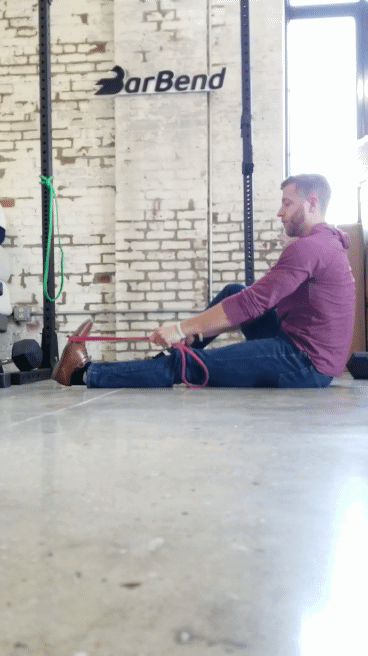
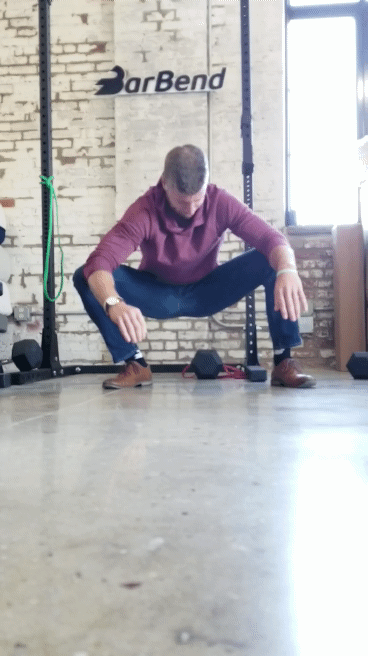
In Closing
Tight calves can be an annoying problem that can influence how well you train and perform various movements. In reality, they can cause bigger problems down the road when not dealt with, and can become major problems themselves. These movements are meant to provide an athlete with ideas to increase their ankle mobility at all times of the day.
Editors note: This article is an op-ed. The views expressed herein and in the video are the authors and don’t necessarily reflect the views of BarBend. Claims, assertions, opinions, and quotes have been sourced exclusively by the author.
Feature image from @lisahaefnerphoto Instagram page.